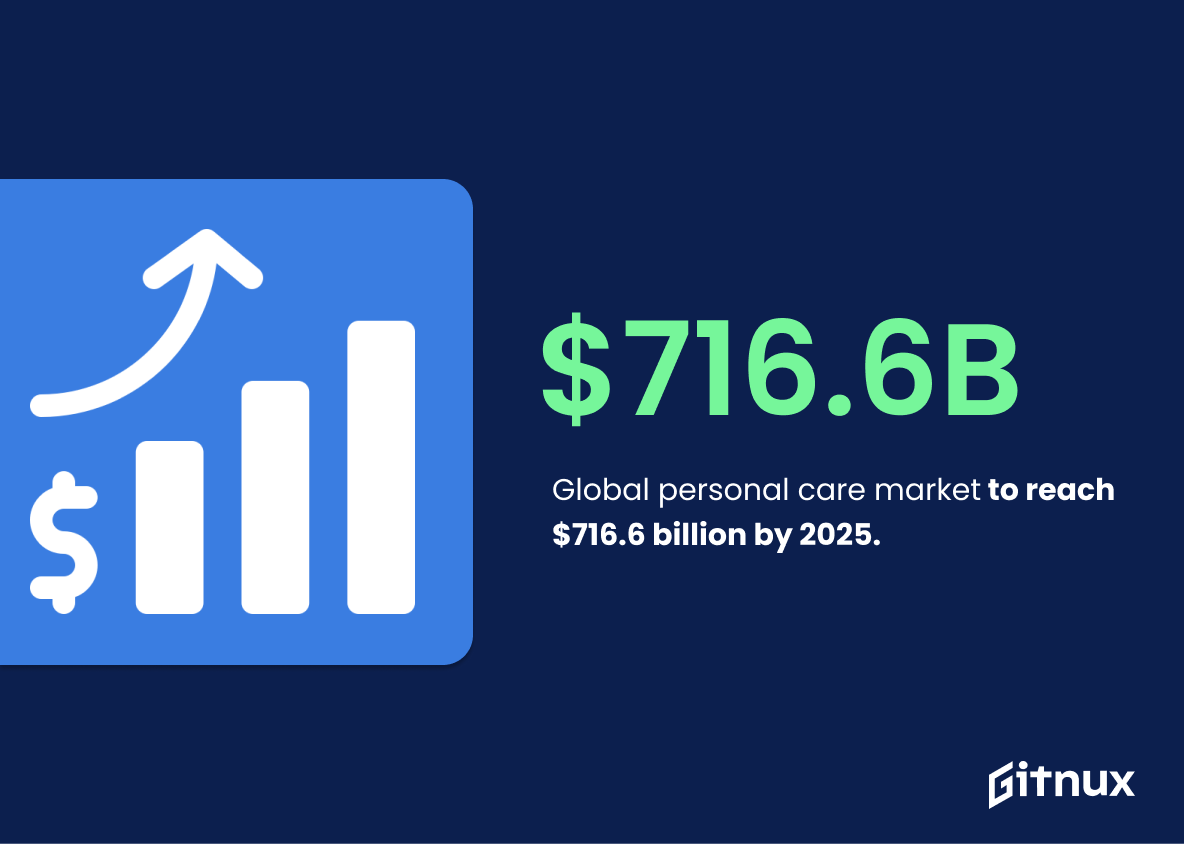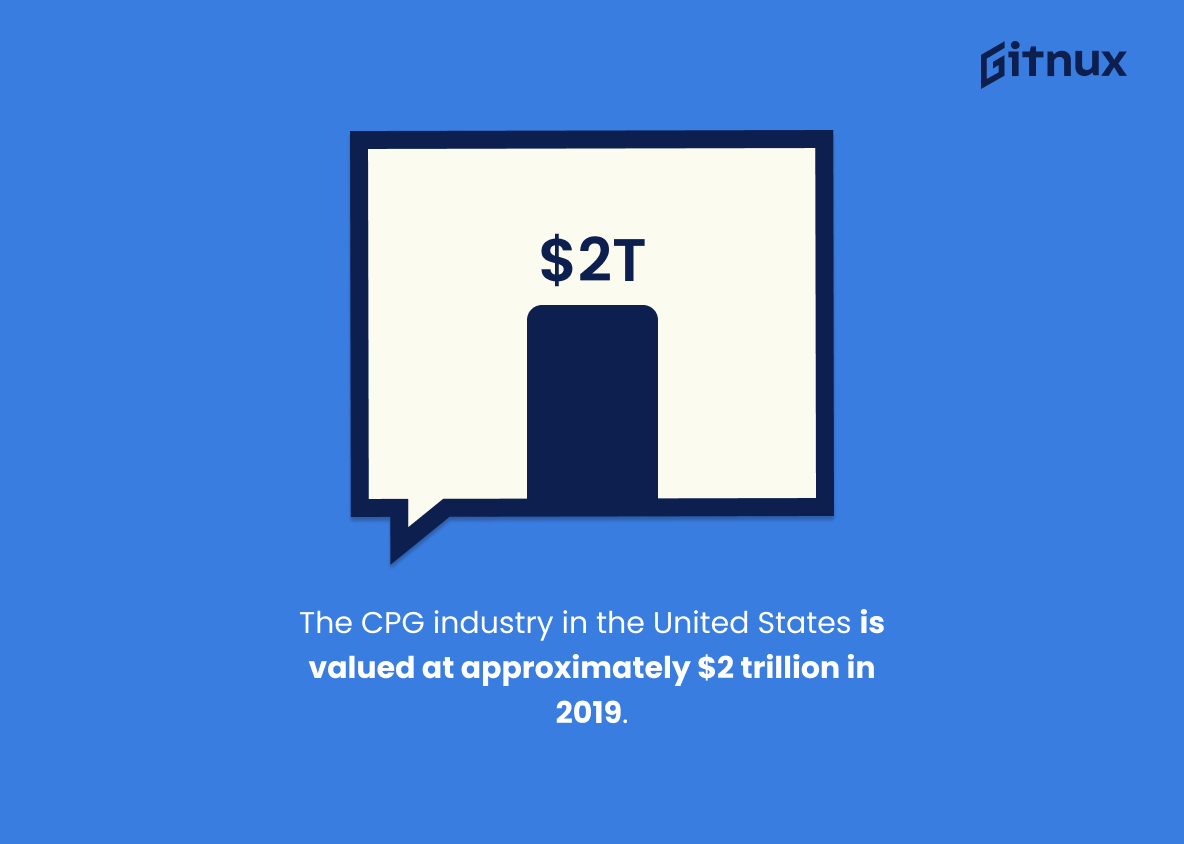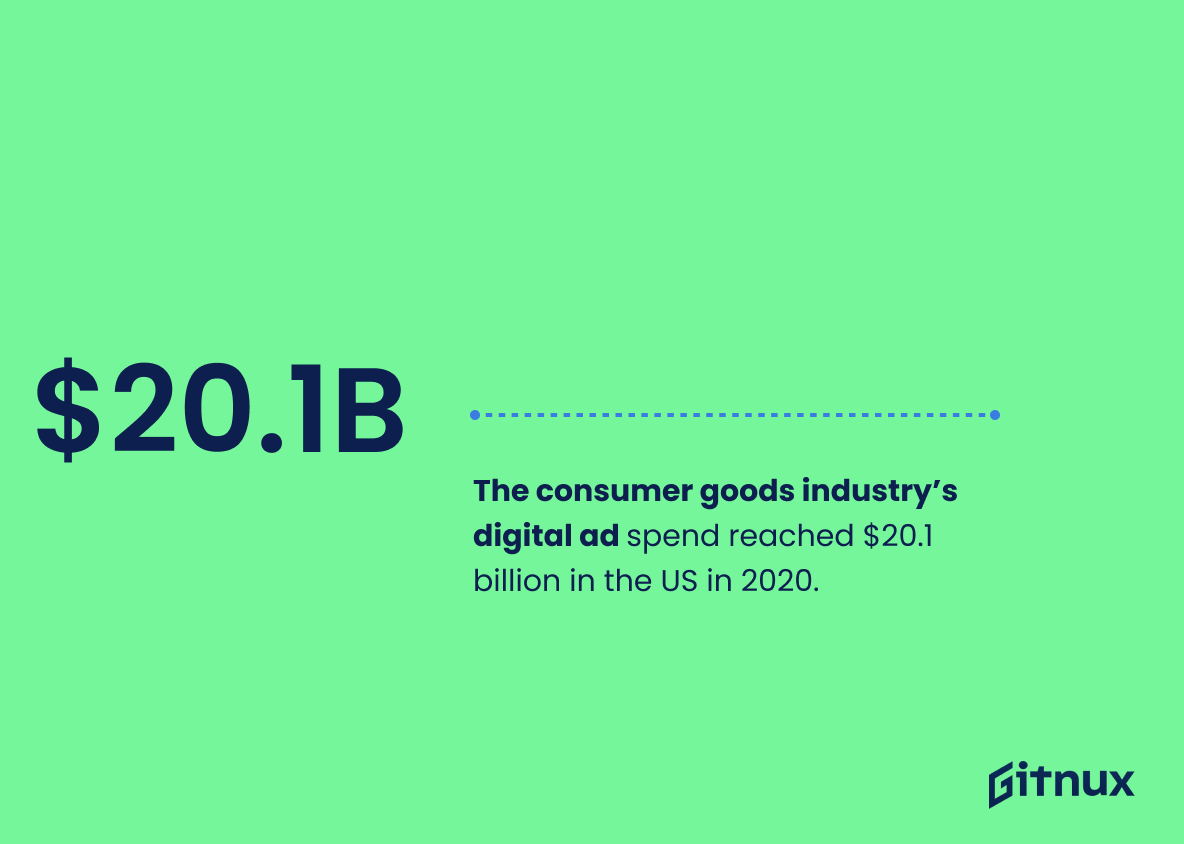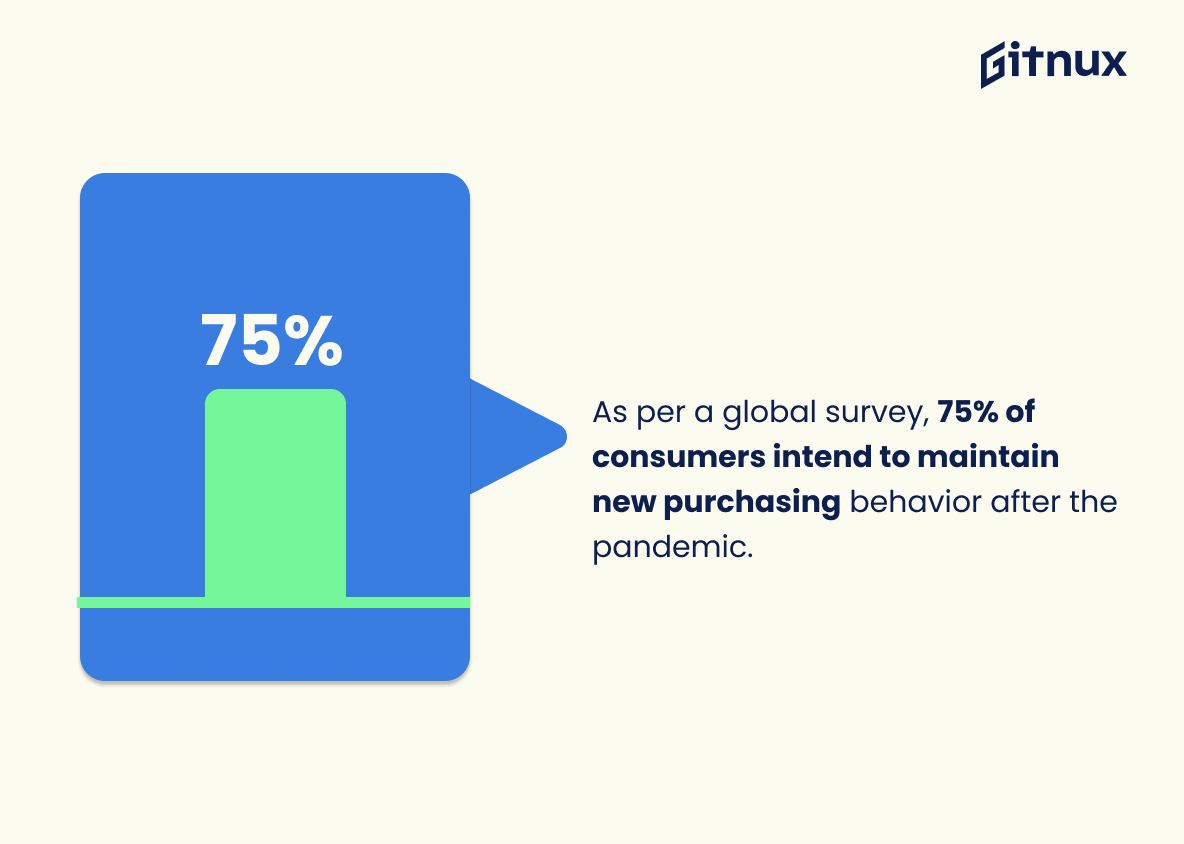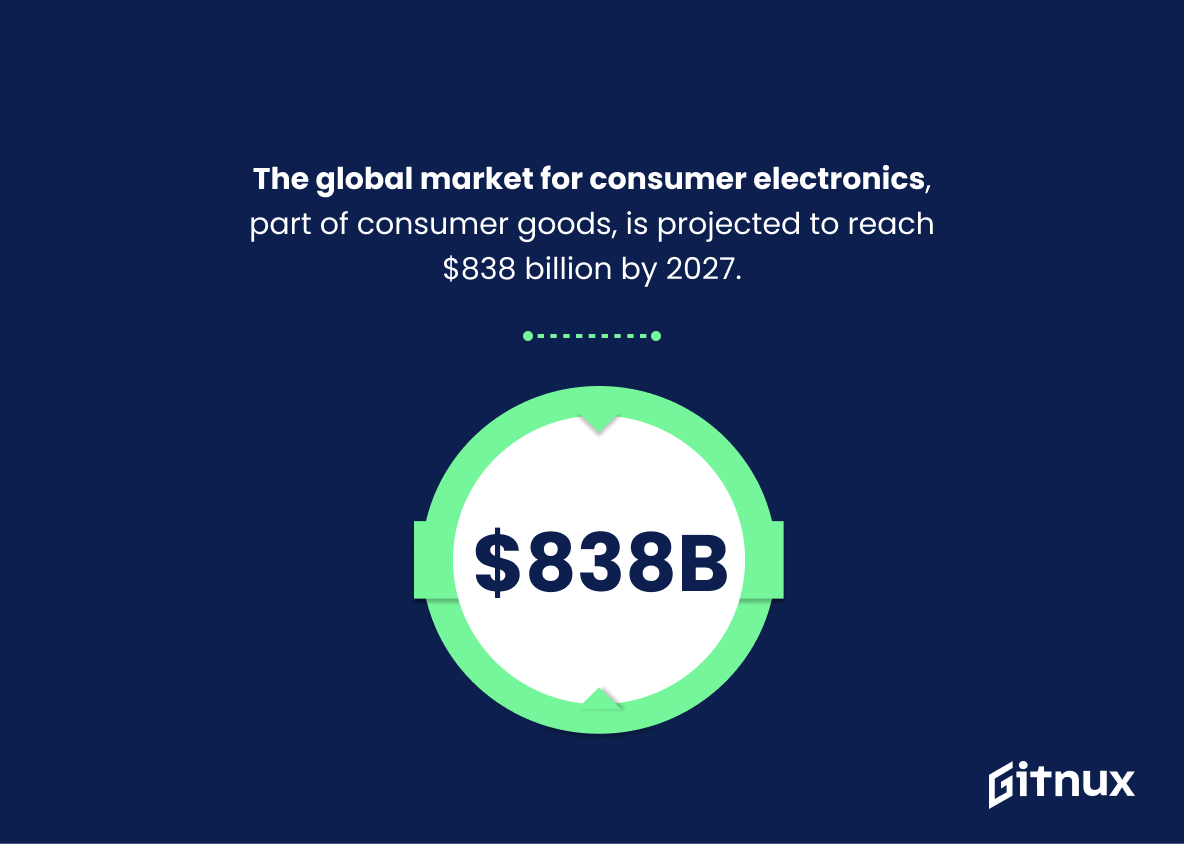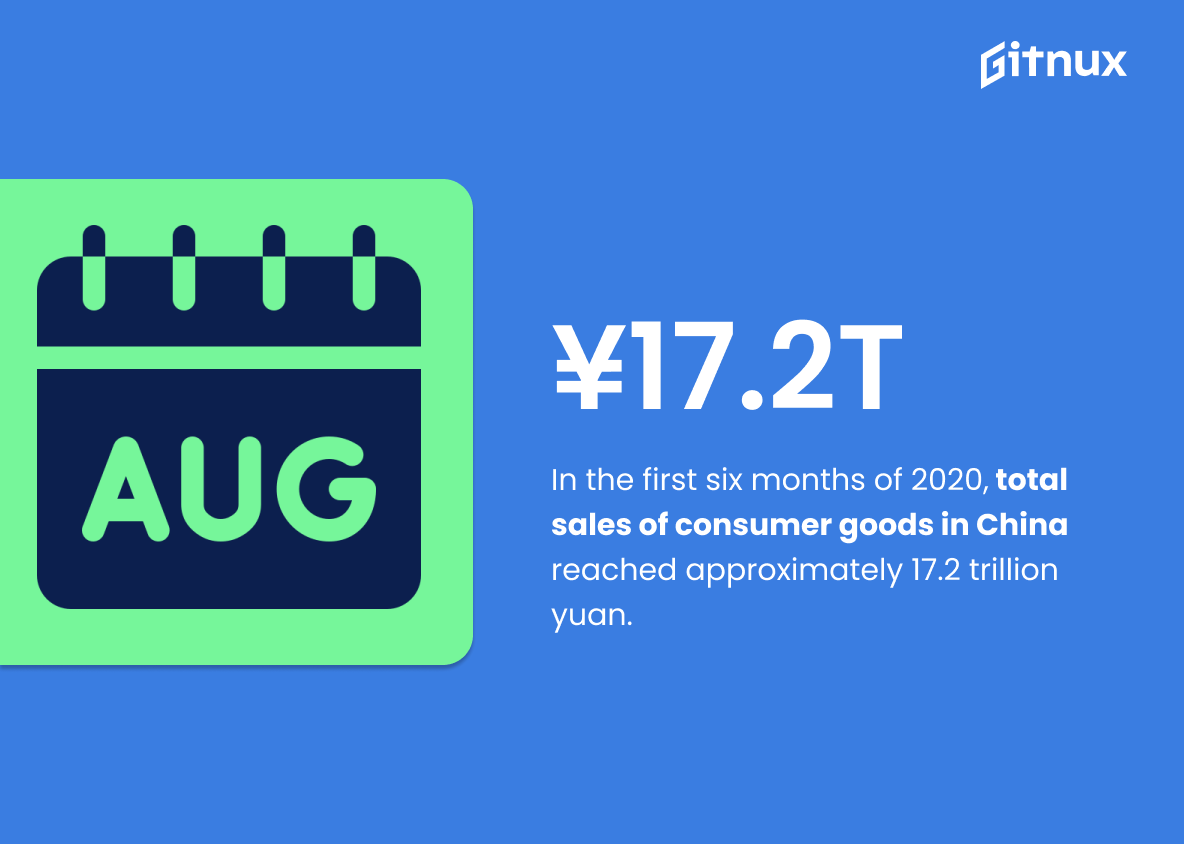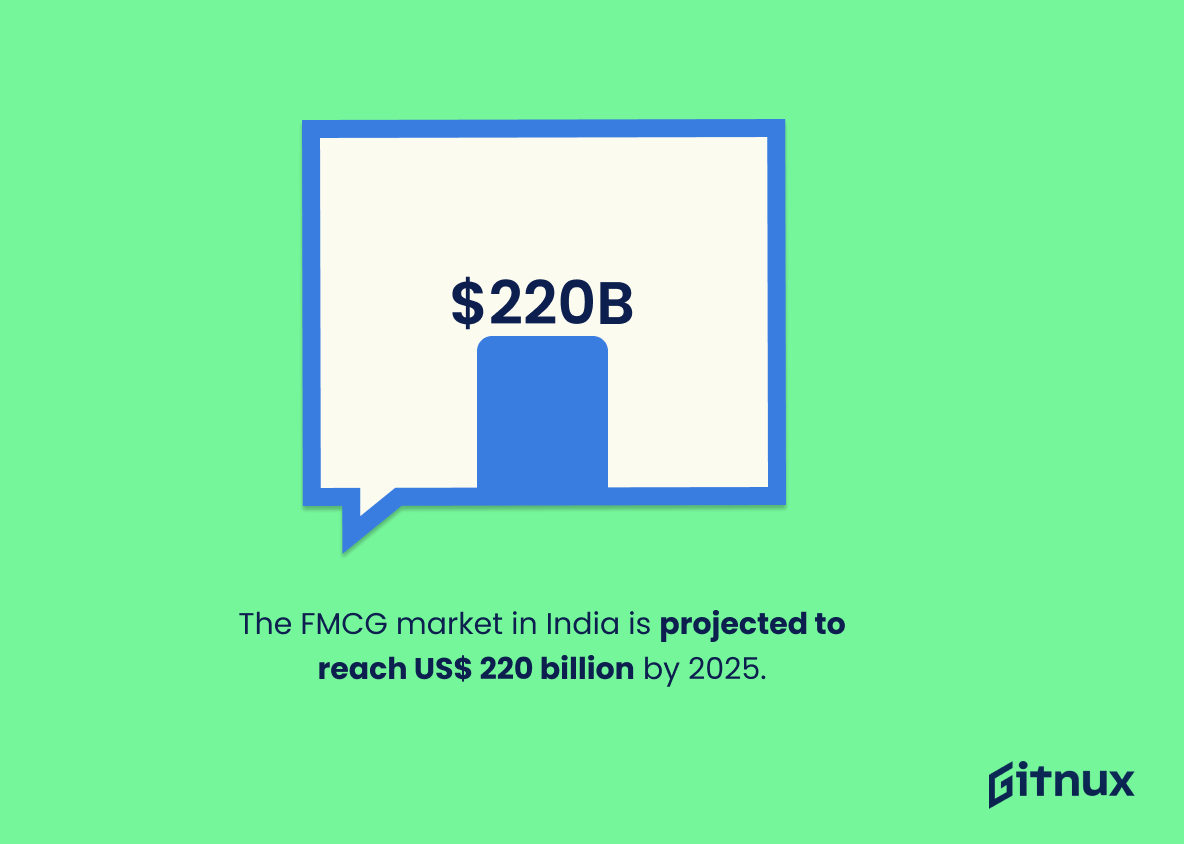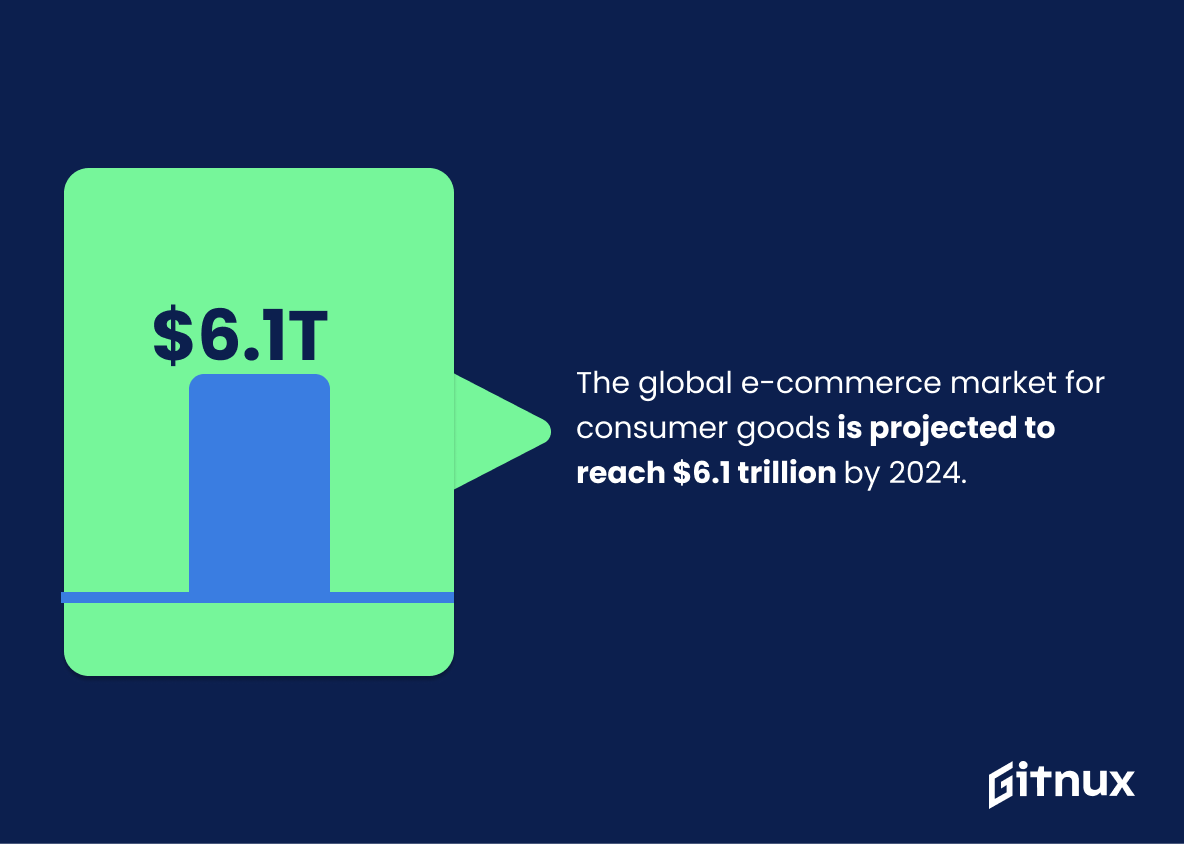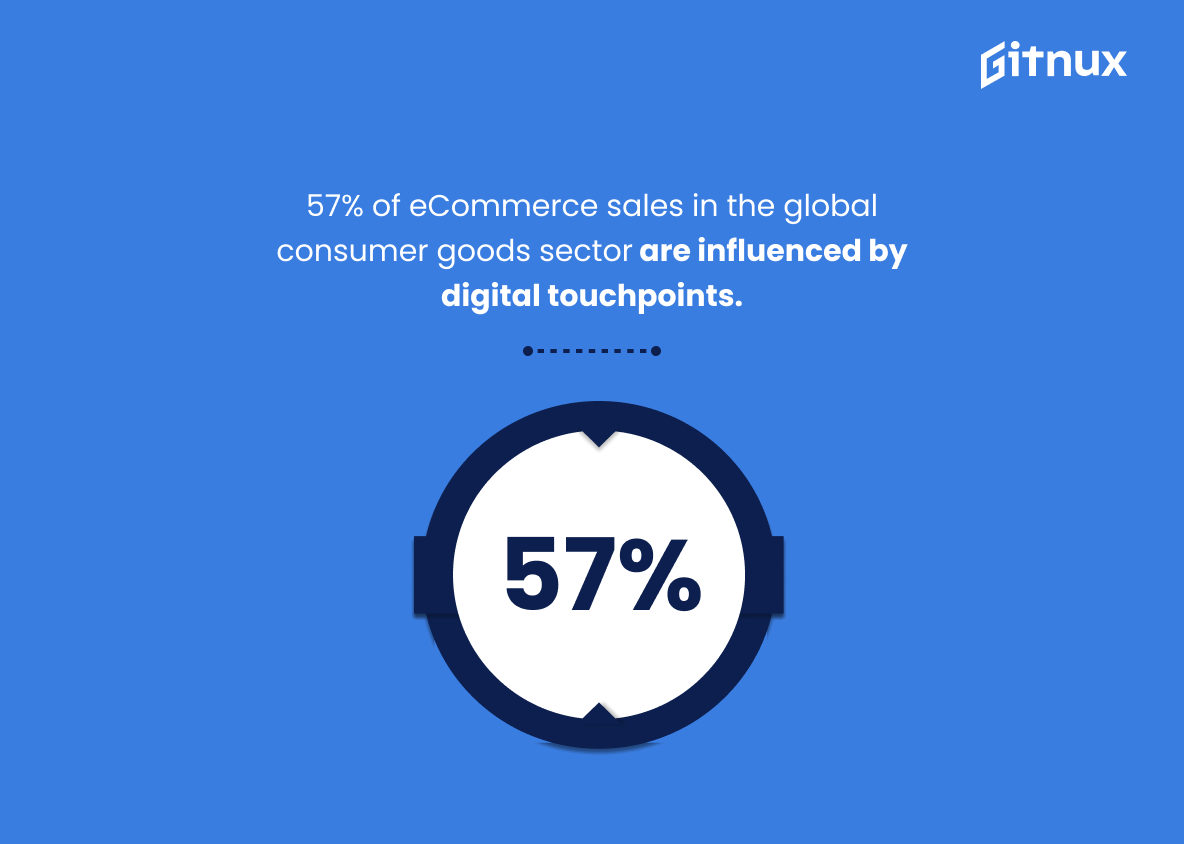Welcome to our intriguing exploration of the consumer goods industry, a sector pulsating with constant evolution and projection of future trends. This blog post is an in-depth dive into vital statistics of the consumer goods industry, revealing data that paints a comprehensive picture of its current panorama.
By understanding these essential figures and facts, you can gain insightful perspectives and make well-informed decisions. Whether you are an industry professional, market analyst, or simply curious about the industry’s dynamics, these consumer goods industry statistics offer a fascinating read for everyone. So, let’s delve into it and unpack these numbers in a meaningful way.
The Latest Consumer Goods Industry Statistics Unveiled
The global personal care product market, a sub-segment of the consumer goods industry, is expected to reach $716.6 billion by 2025.
The sheer magnitude of the global personal care market’s projected value speaks volumes about the consumer goods industry’s scope and potential. Forecasted to reach a staggering $716.6 billion by 2025, this figure underscores the dynamic growth and robust health in this sector. This projection serves as a testament to consumers’ ever-evolving demands and the industry’s continual innovation.
Within the canvas of consumer goods industry statistics, the personal care product market paints a vivid image of vibrant colours, symbolizing potential profit, growth, and expansive market opportunities that await innovative players willing to compete and adapt in this fast-paced industry.
The CPG industry in the United States is valued at approximately $2 trillion in 2019.
Grasping the enormity of the CPG industry’s valuation in the United States at a staggering $2 trillion in 2019 adds considerable heft to our understanding of just how integral this sector is. This figure underscores not only the industry’s vast impact on the economy but also its role as a major player in driving massive consumption patterns.
Weaving this monetary texture into our blog post about Consumer Goods Industry Statistics paints a vivid image of an industry pulsating with monetary strength, demand, and growth potential. The sheer volume of this value puts into perspective the profound reach, influence, and even power of consumer goods within the wider economic tapestry.
The consumer consumer goods industry’s digital ad spend reached $20.1 billion in the US in 2020.
Illuminate the significance of this intriguing datum that unravels the mercurial rise in digital ad spend in the consumer goods industry, which peaked at a whopping $20.1 billion in the US alone in 2020. It acts as a flambeau, shedding light on the evolving strategies of the consumer goods industry, which is steadily shifting from traditional advertising arenas towards digital platforms.
This figure demonstrates not only the industry’s innovation but also its response to consumers’ increasingly digital habits. As a result, comprehending this statistic is like decrypting a hidden code to fathom the industry’s current marketing direction and the pulse of consumer engagement.
As per a global survey, 75% of consumers intend to maintain new purchasing behavior after the pandemic.
Diving into the heart of this compelling statistic, we transport ourselves into the rapidly evolving world of consumers’ buying habits. The staggering 75% of global consumers intending to uphold their new purchasing behavior post-pandemic, serves as a beacon illuminating the foreseeable future of the Consumer Goods Industry. This provocative statistic does not merely represent a set of numerical data, but a paradigm shift in consumer behavior – a call to action for industry stakeholders to constantly innovate, adapt and stay ahead of the curve.
Channeling this information into the gears of strategic planning could potentially lead to business growth, increased market share, and successful customer retention. It propels the importance for Consumer Goods Industry to relentlessly hone in on understanding consumers’ purchase journey, redefine their marketing and sales strategies, and ensure they remain relevant in this dynamic landscape of consumer behavior. It’s less of a crystal ball, and more of a compass – guiding the narrative between consumer habits and industry agility in the blog post.
The global market for consumer electronics, part of consumer goods, is projected to reach $838 billion by 2027.
An escalating crescendo in the global market for consumer electronics, anticipated to plateau at an impressive $838 billion by 2027, paints a luminous future for the consumer goods industry. This formidable projection is a testament to the industry’s dynamic resilience and diverse potential, thus serving as a critical anchor point in any analytical discourse about industry statistics.
Highlighting this forecast not only enriches our understanding of market trends but also offers a bird’s eye view of potential investment, innovation and growth opportunities within the consumer goods landscape. The numbers speak volumes – they fuel strategic planning for businesses and stakeholders, calibrate expectations for consumers and investors, and illuminate the path forward for future market trends and corporate strategies.
In the first six months of 2020, total sales of consumer goods in China reached approximately 17.2 trillion yuan.
Presenting this statistic adds significant value to the blog post. Being the world’s most populous country, China’s consumer goods industry serves as a pivotal barometer, indicating global consumption trends and consumer behaviour. The impressive figure of approximately 17.2 trillion yuan in the first half of 2020 reflects the immense scale of China’s consumer goods market.
In a time of towering economic uncertainty due to the global pandemic, understanding these trends could be insightful in devising informed strategies for businesses worldwide. This statistic hence, adds a layer of contextual relevance, enhancing the depth of the discussion in the blog post on Consumer Goods Industry Statistics.
The FMCG market in India is projected to reach US$ 220 billion by 2025.
Illuminating the path forward, the projection of India’s FMCG market reaching US$ 220 billion by 2025 serves as a catalyst for understanding the profound growth and evolving dynamics in the Consumer Goods Industry. This figures weave a tapestry of opportunity, highlighting not only the immense expansion of the sector itself, but also the potential for entrepreneurs, industry stakeholders and global investors eager to tap into this thriving marketplace.
The change in these numbers underscores the transformative power of consumer behavior and economic enhancements – key factors that are driving this meteoric rise in one of the globe’s most diverse economic landscapes. Thus, this statistic forms a pivotal cornerstone in our blog post, shaping our understanding of the Consumer Goods Industry from a statistical perspective.
The global sportswear market, a sub-sector of consumer goods, is expected to reach $547.4 billion in 2024.
In the vast universe of Consumer Goods Industry Statistics, the anticipated growth of the global sportswear market to a staggering $547.4 billion in 2024 serves as an illuminating supernova. This figure emanates crucial insights about consumer trends and preferences, investment opportunities, and the industry’s potential dynamism. It hints at how health-conscious lifestyles and athleisure trends fuel consumers’ buying decisions.
For investors and manufacturers, it unfolds a lucrative potential that can be tapped and leveraged for sizable profits. The statistic, in essence, slices through the complex weave of the consumer goods industry, fostering a clearer understanding of market growth, product innovation potentials, and the remarkable zeal of sportswear products.
The global e-commerce market for consumer goods is projected to reach $6.1 trillion by 2024.
As we unfurl the panorama of Consumer Goods Industry Statistics, it becomes pivotal to shine light on a statistic that emanates grandeur of this sector. The projected ascension of the global e-commerce market for consumer goods to an astounding $6.1 trillion by 2024 not only underscores the momentous proliferation of e-commerce but also heralds a transformative era for the consumer goods industry.
This estimation reverberates the market’s exponential growth, its adaptability in embracing technological advancements and its driving force of changing consumer preferences. The scale of this staggering figure posits as a harbinger of the burgeoning opportunities for businesses and investors in the sector, and the intensity of competition that awaits. Truly, this is a statistic that weaves a significant narrative in the tapestry of Consumer Goods Industry Statistics.
57% of eCommerce sales in the global consumer goods sector are influenced by digital touchpoints.
Delving into such insightful data, the commanding figure of 57% indicating eCommerce sales being influenced by digital touchpoints is a testament to the digital revolution within the consumer goods industry. This metric unshrouds that more than half of the sales are under the sway of digital influences, underscoring the substantial role of online avenues in shaping customer choices and driving the wheel of eCommerce sales.
For savvy industry players and observers, this statistic not only provides a keyhole view of existing consumer behavior and market trends, but challenges them to harness the power of digital platforms. In the drafting stage of any strategic reform, this insightful figure positions itself not as mere data, but as a compass pointing towards potential avenues for market expansion, customer outreach and competitive edge.
83% of global consumers are open to buying direct-from-manufacturer consumer goods.
Unpacking this number, 83%, swoops us into a new realm of consumer thought patterns with intriguing implications for the Consumer Goods Industry. It’s like prying open the Pandora’s Box of consumer perspectives, clearly signaling a drastic shift towards favoring direct-from-manufacturer purchases. This not only shines a spotlight on the diminishing allure of traditional retail models but also offers newfound opportunities for manufacturers to engage directly with their end-users.
Think about the game-changing potential here: enhanced communication, tailored marketing strategies, and laser-focused consumer feedback. Industrial players, gear up. This surge in openness towards direct manufacturer purchases is not just a number – it’s the dawn of a transformation, and it’s time to ride the tide.
The organic food market, part of the consumer goods industry, is expected to surpass $500 billion by 2026.
Underscoring the transformative nature of the consumer goods industry, the anticipated ascension of the organic food market to the $500 billion threshold by 2026 helps us illustrate the substantial shifts in purchasing patterns and consumer preferences. This impactful prediction paints a vivid picture of the ongoing dynamic evolution on both end-user behavior and industry responses.
It signals an undeniable upswing in consumers’ focus on health, wellness, sustainability, and environmental consciousness, impacting the strategies and product development of all entities within the consumer goods industry. As such, it offers a crucial touchstone for gauging industry trends and future prospects, emphasizing the growing significance of the organic food market as a powerful player within the broader consumer goods landscape. It’s more than a statistic—it’s a market narrative in numeric form.
50% of consumers claim that environmentally friendly attributes are important for their purchasing decisions.
Gauging the pulse of the consumer market, an intriguing insight reveals itself; a striking 50% of consumers echo the sentiment that environmentally friendly attributes govern their purchasing decisions. Within the tapestry of consumer goods industry statistics, this serves as a significant thread, signaling an evolving consumer consciousness.
Firstly, this statistic paints a clear picture of shifting dynamics within the consumer psyche. It underlines a burgeoning eco-awareness, indicating that half the consumers are willing to pivot their buying habits based upon how green the products are.
Tailoring our gaze specifically towards the Consumer Goods Industry, the echo of this statistic reverberates even more potently. It acts as a beacon, guiding businesses to strategically tailor their product development, marketing efforts, and overall operational ethos towards environmental sustainability. The companies that heed this call are not only addressing a market demand but are also positioning themselves as responsible entities within the global community.
Additionally, this statistic can be perceived as an early warning system for businesses clinging to less eco-friendly practices. The message is clear; transform or risk becoming irrelevant in a market characterized by a rising tide of environmental consciousness. It underlines that neglecting, or ignoring this 50% of consumers might come at a perilous cost.
At its core, the environmental pulse of today’s consumer is more than a passing fad – it’s more like the beat of a drum sounding the march towards the future of the Consumer Goods Industry. And this drumbeat, represented by the 50% statistic, though merely a whisper today, could well become a roaring chorus in the not-too-distant future.
It’s predicted that AI could drive GDP gains of $15.7 trillion in the global economy by 2030, indirectly impacting the consumer goods market.
Shining light on such an astounding prediction sets the stage for envisioning the immense possibilities that lie at the intersection of AI and the Consumer Goods Industry. By 2030, AI potential economic impact could result in a monumental increment of $15.7 trillion in the global economy. This staggering statistic doesn’t just correspond to a financial value; it translates into a seismic shift in the consumer goods market, determining the way products are produced, marketed, and consumed.
The amplified productivity, innovative delivery models, and personalized consumer experiences enabled by AI could completely redefine the landscape of the consumer goods industry, making this prediction a crucial cornerstone in any meaningful discussion or analysis of Consumer Goods Industry Statistics.
64% of U.S. consumers feel companies should take the lead in driving social and environmental change.
In the bustling realm of Consumer Goods Industry Statistics, some figures stand head and shoulders above the rest, offering profound insight. Take for instance the observation that 64% of U.S. consumers believe companies should direct the charge towards societal and environmental change – a pulsating heartbeat in the body of data.
This statistic is a beacon in understanding trends of consumer expectations. Brands in the consumer goods industry cannot afford to overlook it. With nearly two-thirds of consumers expecting more than just profit-focus from companies, it illuminates the path that businesses should strive to walk down – one of social responsibility and environmental stewardship.
In a rapidly evolving marketplace, this statistic is an emblem of change – reflecting a shift in consumer sentiment towards valuing companies that perceive their role as catalysts for meaningful change. Think about it as the weather vane on a farm, indicative of the winds of change blowing in consumer behavior, reshaping the landscape for the consumer goods industry.
Clinging to such data provides a strategic advantage, a chance for businesses to readjust their sails, adopt more socially responsible practices, and utilize it as a powerful magnet to attract this growing segment of aware and conscientious consumers.
China is expected to become the largest grocery market by 2023, with a market value of $1.8 trillion.
Highlighting the projected shift in the global grocery arena, the forecast of China dominating the grocery market by 2023 with a whopping $1.8 trillion value serves as a beacon for all players in the consumer goods industry. It challenges businesses to direct their strategies and innovations towards satisfying this behemoth market.
Undoubtedly, it underscores China’s growing economic might and consumers’ evolving shopping behaviors, which could significantly affect the future trajectories for grocery retailers, brands, and manufacturers worldwide. This statistic captivates not only by its sheer potential magnitude but also by opening a world of opportunities and competition within the consumer goods sector.
25% of global consumers would pay more for sustainable products in 2020.
Unveiling the hidden power of this statistic, it paints a vivid picture that one quarter of worldwide customers in 2020 were prepared to dig deeper into their pockets for environmentally-friendly products. This noteworthy shift in consumer behavior widens the horizon for businesses in the Consumer Goods Industry.
They can tap into this market segment by implementing sustainable practices and offering products aligned with ecological principles, thus enhancing their brand image, boosting customer loyalty and potentially increasing profits. This statistic is a lighthouse, guiding businesses to the shoreline of sustainability, where consumerism meets responsibility.
Conclusion
In essence, the Consumer Goods Industry is a vital cog in any thriving economy, displaying resilience and adaptability amidst global changes. The data and statistics presented in this blog post reflect dynamic growth, evolving trends, and market shifts that hold substantial opportunities for businesses. Understanding these guiding metrics can greatly influence one’s formulation of business strategies.
While future predictions based on current statistics suggest a more digitally-inclined and sustainably-conscious marketplace, adaptability remains the key to success in this ever-changing industry. Moving forward, businesses must prioritize insights garnered from these statistics to remain competitive and seize emerging opportunities in the Consumer Goods Industry.
References
0. – https://www.www.statista.com
1. – https://www.www.igd.com
2. – https://www.sloanreview.mit.edu
3. – https://www.www.pwc.com
4. – https://www.www2.deloitte.com
5. – https://www.www.unilever.com
6. – https://www.www.ibef.org
7. – https://www.www.nielsen.com
8. – https://www.www.grandviewresearch.com
9. – https://www.www.emarketer.com
10. – https://www.www.businesswire.com
11. – https://www.www.bazaarvoice.com
12. – https://www.www.accenture.com
13. – https://www.www.coresight.com
14. – https://www.www.polarismarketresearch.com
15. – https://www.www.researchandmarkets.com
16. – https://www.www.globenewswire.com
